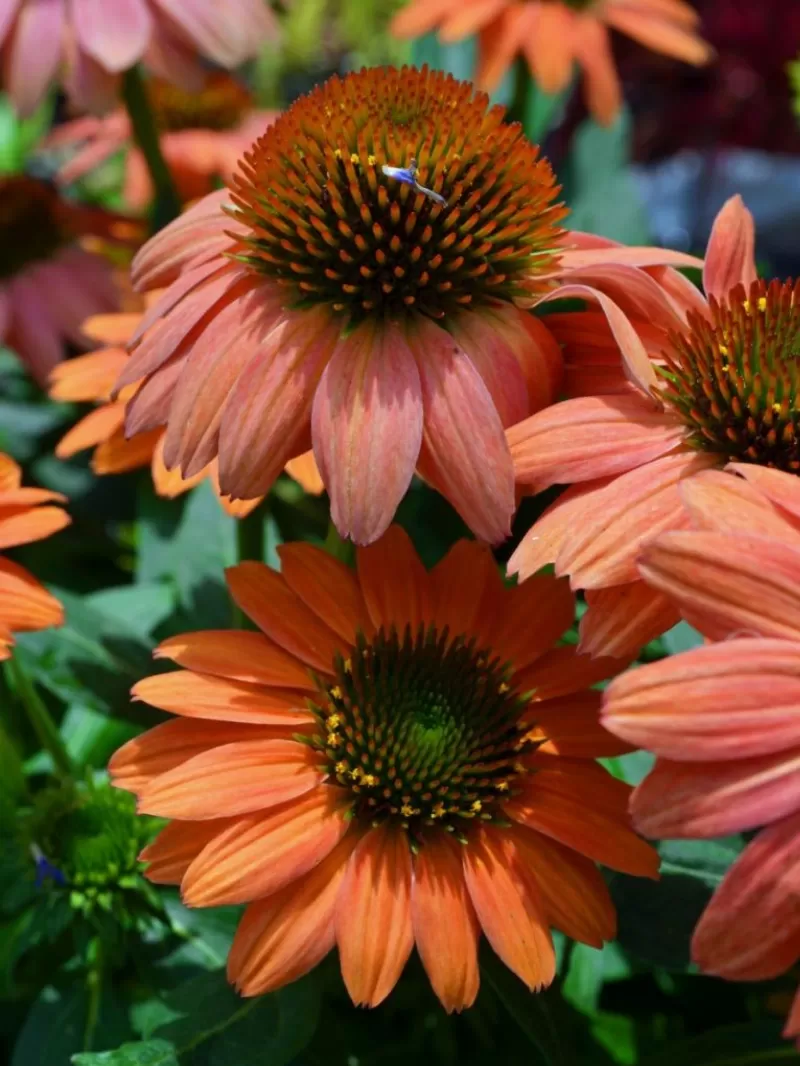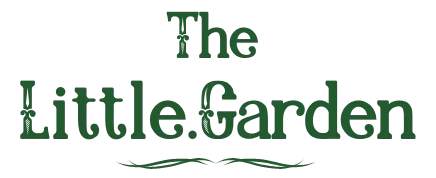- Early Detection: Regularly inspect coneflowers with a magnifying glass for tiny white specks or rosette-like deformations.
- Immediate Removal: Quickly remove and destroy infected flowers to prevent mite spread.
- Treatment Options: Apply horticultural oils, neem oil, or insecticidal soaps for 1-2 weeks.
- Continuous Monitoring: Inspect plants twice weekly for several months to ensure effective control.
- Distinguish from Other Issues: Learn to differentiate mite damage from diseases like aster yellows.
 Coneflower mites causing rosette-like deformations
Coneflower mites causing rosette-like deformations
Understanding Coneflower Mites
Coneflower mites, also known as Eriophyid Mites or Coneflower Rosette Mites, are microscopic pests that can wreak havoc on your beloved coneflowers. These tiny troublemakers are so small that they often go unnoticed until significant damage has occurred.
You're reading: How to Get Rid of Coneflower Mites and Other Pests
As an avid gardener, I’ve learned the hard way that these mites are masters of stealth. They nestle inside growing flower buds, sipping away nutrients and causing characteristic rosette-like deformations in the flower tufts. It’s like they’re giving your coneflowers an unwanted makeover!
 Tiny mites spreading through wind
Tiny mites spreading through wind
What makes these mites particularly tricky is their ability to spread. They’re nature’s hitchhikers, catching rides on the wind, insects, and even unsuspecting animals. One day your garden is pristine, and the next, you’ve got a mite party in full swing!
How to Get Rid of Coneflower Mites
Step 1: Remove Infected Flower Heads
Time to channel your inner detective! Grab a magnifying glass and some good lighting. Carefully inspect each flower, looking for signs of those pesky mites. When you spot an infected bloom, don’t hesitate – snip it off with clean shears and immediately place it in a sealed plastic bag.
Remember, containment is key. As my grandmother used to say, “One bad apple spoils the bunch.” The same goes for infected flowers – keep them away from healthy plants at all costs!
Step 2: Destroy the Removed Parts
Now, let’s talk disposal. You might be tempted to toss those infected flowers in the compost, but trust me, that’s a recipe for disaster. Instead, take them far from your garden and either douse them in boiling water or burn them. It might seem extreme, but it’s the surest way to stop those mites in their tracks.
 Careful removal of infected flowers
Careful removal of infected flowers
Step 3: Apply Treatment
Depending on how bad the infestation is, you’ve got a few options:
- Horticultural Oil: This is my go-to for moderate infestations. It smothers the mites without harming beneficial insects.
- Neem Oil: A natural alternative that disrupts the mites’ life cycle. Plus, it smells nice!
- Insecticidal Soaps: Effective for mild cases and gentle on plants.
Whichever method you choose, consistency is key. Treat your plants every 7-10 days for at least two weeks. Think of it as giving your coneflowers a spa treatment – they’ll thank you for it!
Step 4: Keep Vigilant
Read more : How Much Water Do Orchids Need & How to Water Orchids Properly
The battle doesn’t end after treatment. In fact, this is where the real work begins. Set a reminder to check your plants at least twice a week. I like to make it part of my morning routine – coffee in one hand, magnifying glass in the other.
This vigilance might need to continue for several months. It sounds tedious, but trust me, it’s worth it to see your coneflowers thriving mite-free!
Coneflower Mites vs. Aster Yellows
Now, here’s where things can get tricky. Coneflower mites aren’t the only troublemakers in town. Aster yellows is another disease that can cause similar symptoms, but it’s a whole different ballgame when it comes to treatment.
 Aster yellows causing flower deformation
Aster yellows causing flower deformation
How to Tell the Difference:
-
Coneflower Mites:
- Affect flower tufts
- Create rosette-like deformations
- Flowers keep their original color
-
Aster Yellows:
- Turns flower petals green
- Causes random, shapeless growths
- Affects the entire plant structure
 Green petals indicating aster yellows
Green petals indicating aster yellows
If you suspect aster yellows, I’m afraid there’s no happy ending. The entire plant needs to go, and you’ll need to thoroughly disinfect the area. It’s heartbreaking, but sometimes we have to make tough choices to protect the rest of our garden.
Other Common Coneflower Issues
Coneflowers are generally hardy plants, but they’re not immune to problems. Here are some other issues you might encounter:
1. Powdery Mildew
This fungal disease looks like someone sprinkled flour on your plants. It thrives in humid conditions with poor air circulation.
Treatment:
- Improve air circulation by spacing plants properly
- Water at the base of plants, avoiding the leaves
- Apply neem oil or a milk spray (1 part milk to 9 parts water)
2. Aphids
Read more : Clematis Early Sensation: A Charming Early Bloomer for Your Garden
These tiny sap-suckers can quickly multiply and weaken your plants.
Treatment:
- Blast them off with a strong jet of water
- Introduce ladybugs, their natural predators
- Apply insecticidal soap or neem oil
3. Japanese Beetles
These metallic green pests love to munch on coneflower leaves.
Treatment:
- Handpick and drop them in soapy water
- Use pheromone traps (but place them away from your prized plants)
- Apply neem oil as a deterrent
Protecting Coneflowers from Pests
Prevention is always better than cure. Here are some pro tips to keep your coneflowers healthy:
- Water Wisely: Water at the base of plants early in the day.
- Mulch Smartly: Use mulch for weed control, but keep it away from stem bases.
- Choose Resistant Varieties: Opt for tough varieties like ‘Magnus’ or ‘PowWow’.
- Prune Regularly: Remove spent flowers and yellowing leaves.
Companion Planting
One of my favorite strategies is companion planting. It’s like creating a little plant community where everyone looks out for each other. Here are some great companions for coneflowers:
- Basil: Repels aphids and mosquitoes
- Dill: Attracts beneficial insects like ladybugs
- Marigolds: Repel nematodes and other soil pests
Conclusion
Dealing with coneflower mites and other pests can be challenging, but with patience and the right approach, you can keep your garden thriving. Remember, every garden has its ups and downs – it’s all part of the journey.
Keep observing, learning, and adapting your techniques. Your coneflowers will reward you with stunning blooms and a garden full of life. Happy gardening, and may your coneflowers always stand tall and mite-free!
Have you battled coneflower mites in your garden? Share your experiences and tips in the comments below. Let’s learn from each other and create flourishing gardens together!
Source: https://thelittle.garden
Category: Gardening



